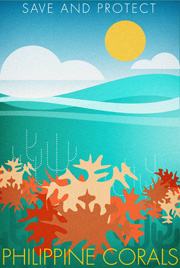Banaue Rice Terraces 
20378banaue-rice-terraces





The Banaue Rice Terraces of the Philippines have been said to be like the 8th wonder of the world. They were carved from the hillside by the tribes people of Ifugao about 2,000-3,000 years ago. The tribes people did this with their bare hands and crude implements, without using machinery to level the steps where they plant their rice, which is what makes this wonder so attractive, aside from the fact that the rice terraces are still used today.
This is considered to be one of the greatest engineering feats of mankind, because if each one were connected end to end, then they would reach halfway across the globe or be 10 times as long as the Great Wall of China. It was not until only 13 years ago (1995) that the Banaue Rice Terraces were declared a World Heritage Site by UNESCO.
The rice terraces are like stepping stones stretching towards the sky, where some of them reach almost 5,000 feet in altitude and cover about 4,000 square miles of land. They are now beginning to show signs that they are eroding, and some of them need maintenance, while the Ifugaos’ new generation is migrating to nearby cities in search of better opportunities.
Even though it is about 8 or 9 hours from Manila in a car, the Banaue rice terraces are known to be one of the most spectacular places to see in the Philippines. They have transformed the Cordillera mountains of barren stone into ledges that are fit to grow rice.Rice terraces. Sometimes called the "Eighth Wonder of the World", the 2000 years old Banaue rice terraces are a UNESCO World Heritage site, and while many are still in use today, the outer rims are showing signs of deterioration. They were created by the Ifugao (local native people), in a massive engineering project to cover the sides of the valleys (probably 200 meters from floor to rim) for several miles, irrigated by means of mountain streams and springs that have been tapped and channelled into canals that run downhill through the rice terraces.
Museum of Cordilleran Sculpture. The Museum of Cordilleran Sculpture was founded by George and Candida Ida Schenk over 30 years ago, and evolved from a small antique store in Manilla, into dream to preserve a culture that is slowly dying. There are over 1,000 pieces in the collection of the Museum, ranging from large-scale, carved wooden Bululs, masks to smaller scale figures, textiles, utilitarian objects, and composite objects
 Ifugao carving at Museum of Cordilleran Sculpture
Ifugao carving at Museum of Cordilleran SculptureViewpoint. On the road to Bontoc, there is a lot of viewpoints with beautiful panoramas on the rice terraces. Walking from Banaue up to to main view point will take 1 to 2 hours, depending how often you stop to enjoy the superb view. Try to go as far as possible from Banaue: the higher you will go, the more beautiful it will be! Count P100 by tricycle from Banaue. From there it's possible to go down by foot to Banaue through the rice terraces (2-3 hours) but the way is quite difficult and you may need a guide for this walk.
By Car
The distance between the Balintawak Cloverleaf, in north Manila at the beginning of the North Luzon Expressway and the Welcome to Banaue sign, is about 332 km. The road is paved all the way to Banaue. Travel time can be as long as 9 hr due to the several blind curves through the mountains.
Best day to travel is on Easter Good Friday, Christmas Day and New Year's Day. It will take about 7 hr by car with a reliable driver from Manila.
By Bus
Getting to Banaue directly might take a lot of effort if you're not taking a direct route from Manila or if you don't have a tour agency to help you. Here are a few possible ways to get to Banaue:
Manila-Banaue (direct)
Ohayami Trans, Lacson Ave. cor. Fajardo St., Sampaloc, Manila (Just near University of Sto. Tomas or take the train from the Legarda Station then just take a trickshaw to the terminal), Provides trips directly to Banaue. They have three daily trips - 21:00, 21:45 and 22:00 leaving their terminal in Manila and taking 9-10 hrs?450.
GV Florida Transport Inc./Dangwa Transport Co., Lacson Ave. cor. Earnshaw St., Sampaloc, Manila (Just near University of Sto. Tomas or take the train from the Legarda Station then just take a trickshaw to the terminal)
Manila - Baguio - Banaue
Ohayami Trans, Otek St., Burnham Park, Baguio City (within Chowking area). 8 hrs. Provides trips from Baguio to Banaue. They have two daily trips - 20:00, 21:00 ?360.
KMS, Near Rizal Park, Baguio City. 7 hr. Provides a mini-bus trip from Baguio to Banaue. They have two daily trips: 08:00 and 21:30. ?400.
The first option may be a good choice if you don't like overnight buses or want to enjoy the very scenic drive during the day.
Manila - Baguio - Bontoc - Banaue
There are jeepneys going from Bontoc to Banaue and even Sagada to Banaue during peak season or holidays.
Manila - Solano - Nueva Vizcaya - Banaue ifugao
Buses heading to Tuguegarao (e.g. Baliwag transit, Victory,Florida transport inc., etc.) pass by the town of Solano. Several jeepneys ply the Solano-Banaue route or the Solano-Lagawe, Ifugao route. From Lagawe, one can then take another jeepney to Banaue.
Manila - Tarlac - Solano - Banaue
Buses heading for Baguio pass by Tarlac. Vizcaya liner plies the Tarlac-Solano route at 05:00.
Want to earn rewards while you search the web?
Try
![]() Bing Rewards now.
Bing Rewards now.
Need to send money to the Philippines? Use Remitly.






